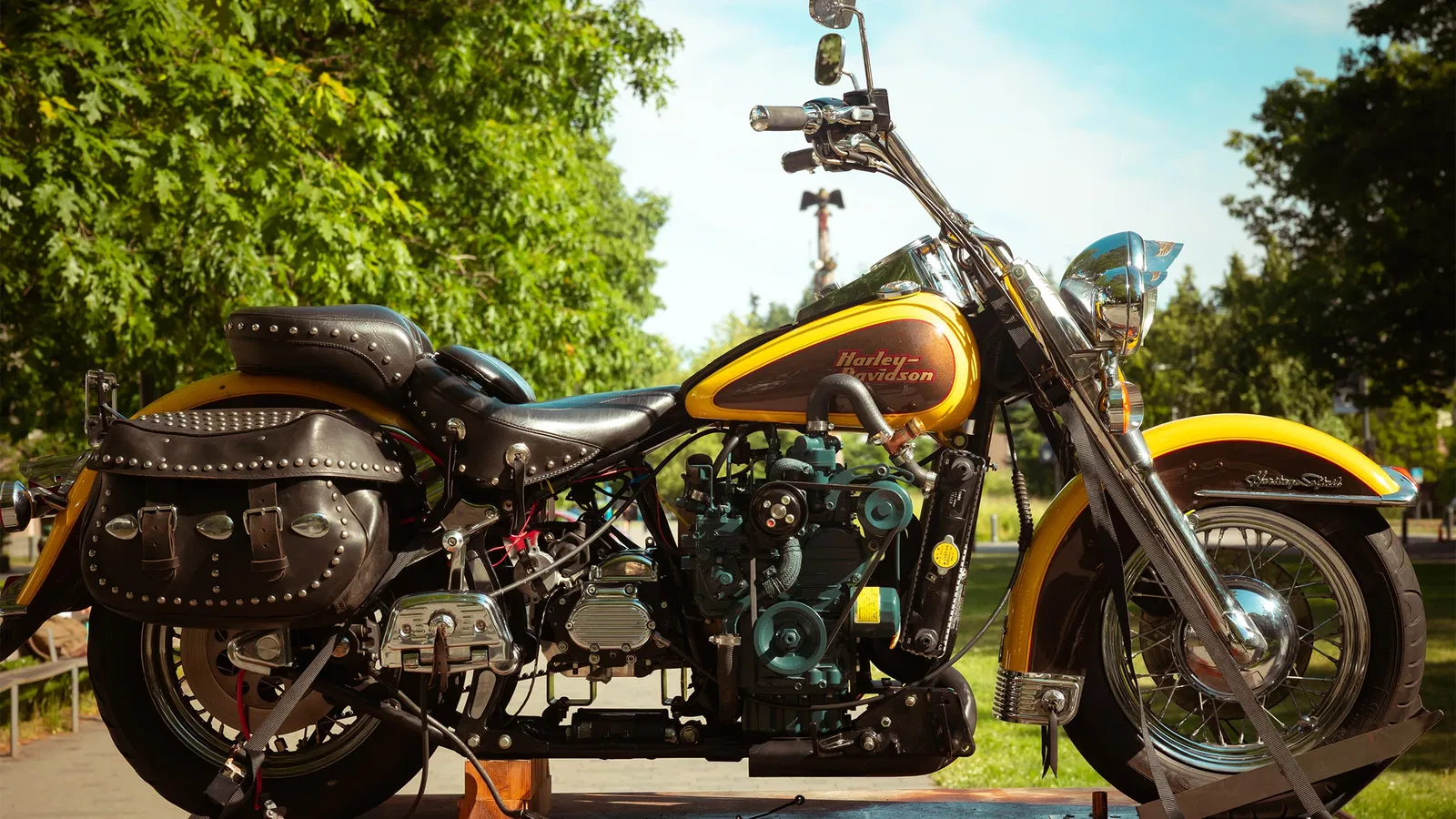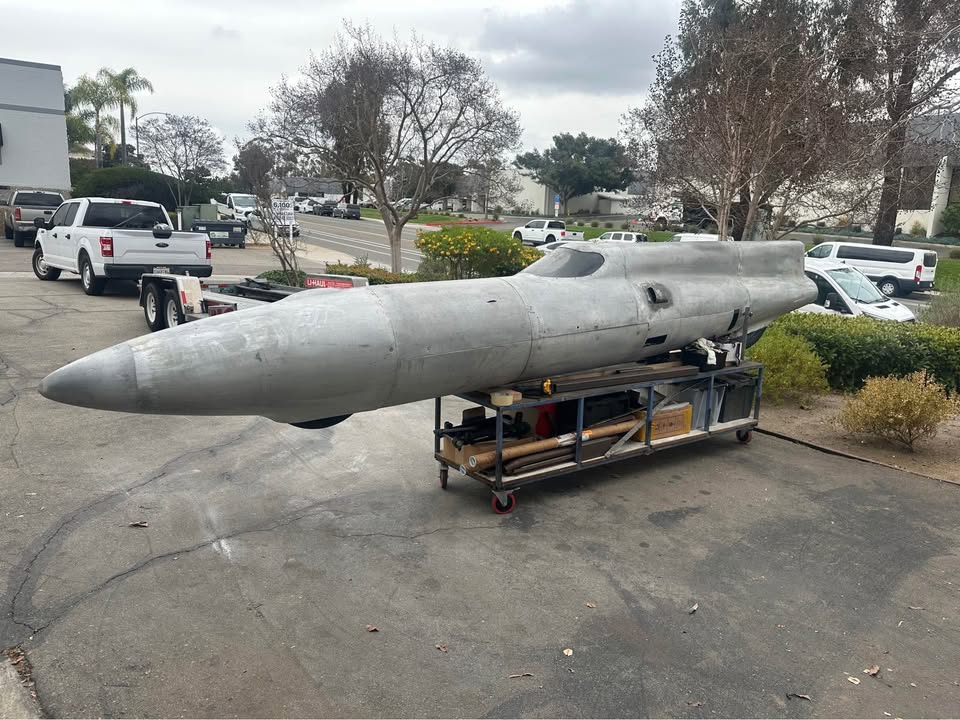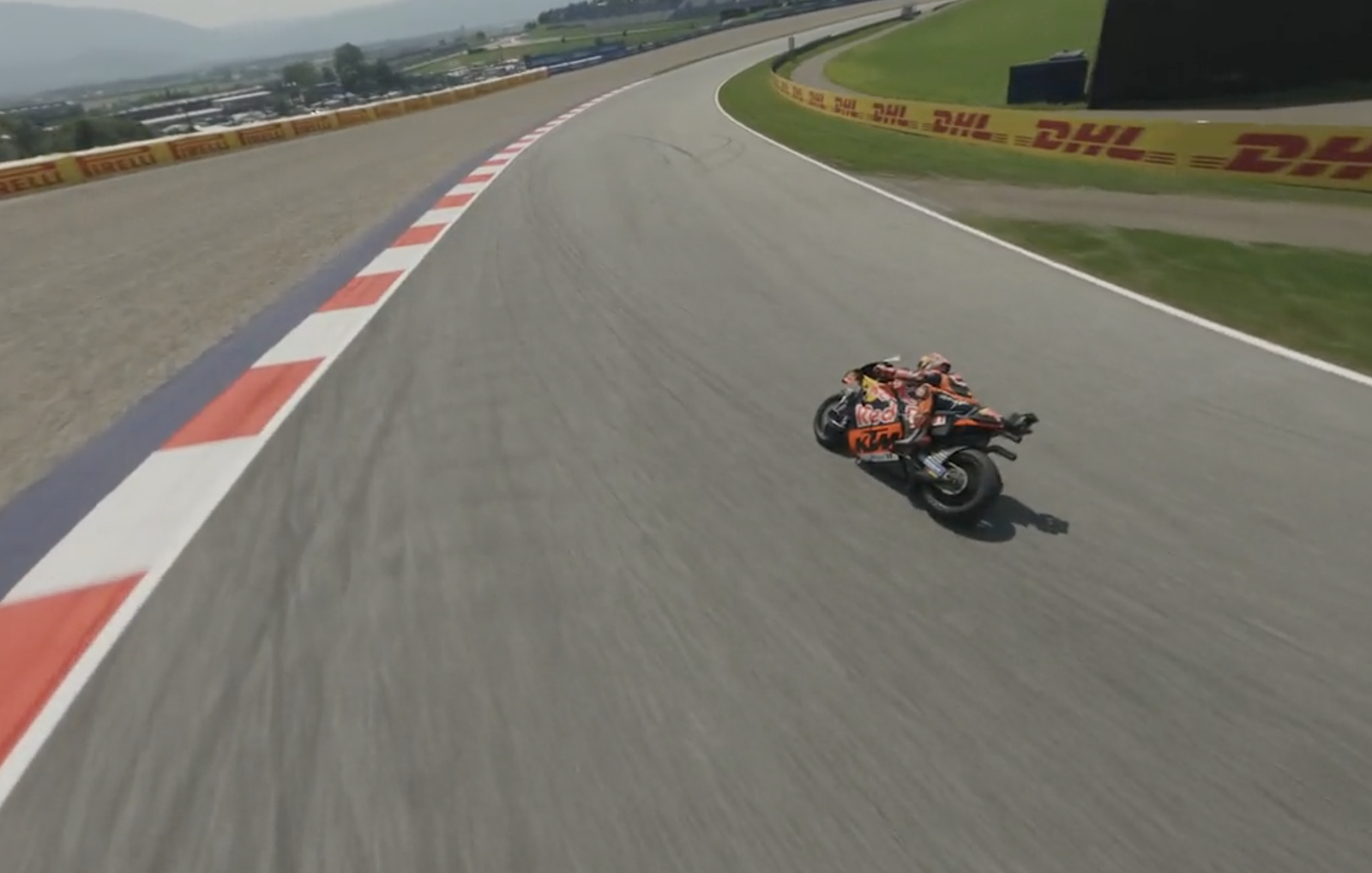Uni student builds, rides biodiesel Harley-Davidson on US road trip
It’s loud, it smells like a chip shop, and its creator hopes it will save the world.

Here was editor Toad’s response when I told him about this biodiesel-powered motorcycle, built around a 1999 Harley-Davidson Softail: “WTAF? How? And why?”
Those are questions that a lot of people probably have for university student Alex Jennison, 22, who is currently travelling some 1,200 miles down the western coast of the United States astride his creation.
Exactly what that creation is, is a little bit of a Wittgensteinian dilemma. Many people would say that Jennison is riding a Harley. Indeed, that’s what Jennison says it is, and certainly that’s what it looks like from a distance. But is a Harley-Davidson without its engine actually a Harley-Davidson?
Because the enormous, shuddering lump that’s actually driving this thing is a three-cylinder Kubota tractor engine.
So, there’s the answer to Toad’s first question. WTAF? It’s a Harl-bota. Or a Kubo-Davidson.

The answer to the question of how this came to be is pretty simple: hard work. A lot of hard work. I mean, a lot.
Alex has spent more than two years working specifically on this project and the idea for it started forming way back when he was 13 years old. He was a kid in the UK back then, teaching himself how to make electric-powered skateboards.
He eventually found his way to the University of British Columbia, in Vancouver, Canada, where he’s working toward a dual-discipline degree in engineering. As part of his degree, he’s been heading up a massive project aimed at demonstrating the practicality of biodiesel.
“Kubota gifted us the engine to demonstrate that clean fuels are viable,” he told the Canadian website Driving earlier this year. “I chose the 1999 Harley-Davidson because it is the last model to have the engine and gearbox separated instead of mated together.”

The Kubota engine would normally run on good ol’ fashioned dead-dinosaur diesel, so the first step in building this bike came in making modifications to get it to run on chip grease. Then he had to restructure things to get the engine to actually fit within the Harley’s frame.
I’ve spent a lot of time going through all of Alex’s videos and social media posts, but I can’t find any information on the exact Kubota engine being used here. Based on a whole lot of digging through Kubota engine specs, however, and a whole lot more flat-out guessing, I’d put money on this being a D1703 engine: a 1647cc beast with a peak power output of 25.7 kW, or 34.5 bhp.
Not exactly face-melting, but enough for highway use. And imagine the torque!
If you know any engineers, you know that social media isn’t usually their forte. They’re just too busy actually doing actual stuff to sit around telling everyone about it.

So, it shouldn’t come as a surprise that the videos on Alex’s YouTube channel leave a number of questions unanswered. But they at least give a sense of the journey he and his fellow university students have been going through over the past two years - trying and failing and trying again. And, in true engineering form, probably not paying as much attention to health and safety as their parents might have liked.
The videos also help to answer the question of why Alex is doing this. The reasons are two-fold. Firstly, he has some ethical concerns about how batteries for electric vehicles are sourced. Specifically, he points to cobalt mining operations in the Democratic Republic of Congo, where, according to Alex, some seven people a week are killed in mining accidents.
Secondly, he is seeking a work-around for the challenges that electric vehicles face in cold climates, like Canada. Pointing to vehicles used to clear snow at his university, he told Driving that electric utility vehicles were “not reliable enough to run non-stop for emergency use and in the winter. What happens with an electric snowplow that has to run around the clock?”
Alex and his team have developed what he calls cold-climate-compatible biodiesel tech that was intended first and foremost to be used by his university’s 400-vehicle fleet. He says that making use of it will reduce CO2 by 74 per cent.

The diesel-powered motorcycle is, he says, “a rolling proof of concept,” which he is using to illustrate the real-world application of the fuel. As part of his road trip, he is making several stops at schools, Harley-Davidson dealerships, and Kubota dealerships to explain the project and prove that clean fuels are viable.
To help him cover various costs, such as accommodation, riding gear, and motorcycle insurance (imagine trying to explain this thing to an insurance actuary), Alex has set up a GoFund me page. It’s probably worth it to throw him a little cash simply to support this kind of out-of-the-box thinking.
For more motorcycle news written by humans, stick with Visordown.com


